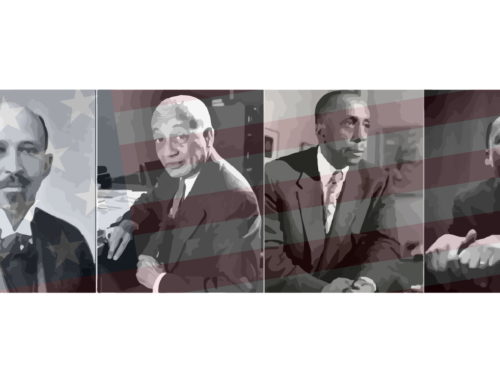Journey2Psychology, A Project by: Dr. Michael Gordon
Mike Gordon is travelling across the world to converse with influential Psychologists and discover the stories behind their work.
This journey will form the basis of a book from political animal press
follow Dr. Gordon’s travels in full at Journey2Psychology
Scalable, accessible, affordable interventions define the aims of Dr. Allison Harvey‘s research with mental illness. She is a professor at the University of California — Berkeley, the Director of the Golden Bear Sleep and Mood Research Clinic, and an award-winning scholar who is partnering with community clinics across northern California to work towards the realization of those aims. Sleep, that mundane and requisite activity that occupies close to a third of our entire lives, is profound in its impact on our health and well-being. The research of Dr. Harvey and her colleagues explores that relationship and uses interventions for improved sleep as a pedestal to broadly improve psychological well-being on a scalable, accessible, affordable level. The impact of Dr. Harvey’s research is so clear and I am happy to share these excerpts from our conversation with you!
Dr. Harvey introduces herself:
To understand Dr. Harvey and her approach to Psychology we need to travel halfway around the globe to her childhood home in Sydney, Australia. (I write that with some excitement as I happen to be journeying to Australia in a few days and will be able to literally experience that transition between northern California and Sydney!) There are attributes and a certain daring that, in discussing her life, Dr. Harvey thought were likely rooted in her cultural origins as an Australian. To Dr. Harvey being Australian lends itself to a certain ruggedness. She expressed some cultural motivation to take on challenges directly and with a do-it-yourself Aussie gusto. An openness, or maybe it would be more accurate to suggest an attractiveness, for one to travel and to explore. To seek adventure. Perhaps there is an intrepid Aussie national spirit that may have influenced some of her life decisions and the directions of her life’s journey.
In any case, baby Allison is born in Sydney with a mother involved in primary education and a father who was a physicist engineer working with the CSIRO, Australian national science organization, similar to the National Institutes of Health in the United States.
She describes her parents in the following excerpt:
In Dr. Harvey’s early life there was clearly an environment that encouraged scientific thought and involvement. Her whole house was a lab, and everything could be viewed through that scientific lens! That seems to be exactly how her father saw the world, and he encouraged his family accordingly. Everything from the exotic to the seemingly mundane was worthy of study. As a child Allison must have mused a bit about a number of things. As she expressed a bit later in our conversation this might have included the difficulty that her father faced with getting a good night’s sleep.
As Allison reached her teenage years she started in school at Danebank. She describes a little of that experience and how it got her on the track for a Psychology major:
It is at Danebank that young Allison experienced her first exposure to Psychology. At Danebank she found an ardor for academics and succeeding in her coursework. And, it was at Danebank — during those all too critical high school years — that she experienced enough work experience as a hairdresser and as a primary school teacher to learn that most valuable lesson: why some of those professions might not be the correct ones for her. All of these early lessons forged her capacity to succeed, and that came to fruition as Allison graduated in 1991 with honors from the University of New South Wales (in Sydney) with her bachelor’s in Psychology.
During her school days, there were a few well-timed, encouraging words that helped guide Allison. There were also several voices discouraging her from reaching too far in her aspirations. Dr. Harvey describes the completion of her degree and how she moved forward in Clinical Psychology thereafter:
Let’s clarify the timeline. Dr. Harvey completed her bachelor’s degree and went to work at Westmead Hospital in Sydney. It was there that she was more formally introduced to Clinical Psychology; she went ahead to complete her Master’s at Macquarie Universityand her PhD in Clinical Psychology at University of New South Wales (both in Sydney). She had lived in Sydney her whole life, with only a modest amount of travel outside of Australia. And as she described there is the Tall Poppy Syndrome which refers to an Aussie cultural bias against intellectual and/or academic elitism (you heard my double take about this expression when Dr. Harvey brought it up. Apparently that’s a common expression in Australia. I plan to use it ad naseum in my conversations with people in Sydney). Australia is known for its ruggedness and its laid back culture. Dr. Harvey heard that chorus of voices: don’t go too far, don’t be one of those elitists. Come to the beach, have a beer, enjoy your life… Her response was to breakout! Tall poppy be damned! She accepts a position to do a post-doc at Oxford University (UK), sight unseen, and ready to resist whatever forces that might press her tall poppy down! Her poppy is now firmly becoming tall.
It is at Oxford, that metaphorical garden of tall poppies, that Dr. Harvey does two critical things. Once again, defying the naysayers, she applied for a lecturer position and — despite the stresses of that process — was hired and set herself up to continue her professional life at Oxford! Secondly, in terms of her scholarship, Dr. Harvey reflected, as if for the first time, about what she might want to study and what really was most interesting to her.
In this excerpt she discusses her finding her scholarship:
It’s interesting how she describes this. She branched out to a totally new research topic and flung herself into the intricacies of sleep and its many implications (for daily life, its comorbidity with other psychological disorders, etc). Eventually sleep became one of her favorite topics and a mainstay of her scholarly work. It is the scholarly that has helped to define the influence she would have on Psychology. Taking on sleep research had many positive impacts for Dr. Harvey and,yet, her reflection is that she would neverrecommend doing such a thing for those going into Psychology. It’s risky. It’s a fraught journey that requires the navigation of new research, new theoretical interests, and a subset of Psychology at the intersection of clinical work and cognitive processes. That particular intersection of sub-disciplines was particularly appealing to Dr. Harvey because of her work with PhD mentor Dr. Richard Bryant (UNSW). After a leap of faith to take on a clinical doctoral program, a leap of faith that took her to Oxford, a leap of faith to apply for and successfully gain a lectureship at Oxford, she leaped once again into Sleep research and a whole new set of interesting challenges.
I wrote a bit about sleep research in a previous post — it is a fascinating topic and full of helpful and immediately applicable concepts! Dr. Harvey started on this topic by trying to understand the cognitions of those who suffer insomnia. What do they think about as they struggle to sleep? With some new students and colleagues, she delved deeper and bolder into sleep: how is it treated? Are those treatments effective? How does sleep intersect with other psychological issues? The answers were surprising and might be summarized as a vicious catastrophic cycle, behavioral manipulations and pharmaceuticals, not very much, and poorly, yikes!
Or, to answer those questions more fully there were (and are) treatments for sleep disorders but they involved behaviors like leaving the bedroom if one was not falling asleep and returning when more fatigued — removing the behavioral association to sleeplessness with the bedroom, but also potentially exacerbating the issues of that particular night as one struggles to find sleep. Others suffering insomnia were being prescribed sleeping pills to more rapidly induce drowsiness, but that has the long-term side effect of causing resistance to the effects of the pills and more insomnia. Moreover, and as Dr. Harvey found in her research, these methods had a lower rate of effectiveness (in this case to produce regular and sustained healthy sleep behaviors) than most other psychological treatments. Importantly, even when some other, rather critical, primary diagnosis was made (e.g., a diagnosis of depression and/or bipolar disorder), often a sleep disorder accompanied that primary diagnosis and persisted even after effective treatment for the primary.
Think about that.
A person is suffering multiple psychological issues: depression, insomnia, maybe a panic disorder. It is common that a person might have more than one psychological issue. Generally, whatever is most severe and dangerous to the person is the target of the major treatment. So if the primary diagnosis is depression, then, first and foremost, treat that. But what if you treat the depression and the person still has insomnia? What if that lack of sleep causes a person to feel tired and withdrawn all the time? What if the insomnia leads back to the depression? What if panicking about depression causes even more insomnia?
A sleep issue is often treated as secondary to another, more severe, psychological disorder in diagnosis, but (as Dr. Harvey and colleagues found in their studies) can also create a kind of vicious cycle in psychological issues. The sleep disorder frequently persists through the initial treatment and can cause the more severe disorder to re-emerge. There is sleep: mundane and yet profound. A part of our daily existence that, if not occurring in a consistent and healthy way, can quickly bleed into affecting our thoughts, coping skills, emotions, and psychological well-being. The more Dr. Harvey looked into these interactions of sleep and psychological well-being, the clearer the relationship became.
What emerges is a transdiagnostic approach to treating sleep and the disorders with which it is so commonly co-morbid. Dr. Harvey describes how she started to take on this approach in the following excerpt:
It may be helpful to include a few definitions. She studied people suffering from bipolar disorder but who were euthymic. Euthymia is the state of typical, regular consciousness when a person who is bipolar is experiencing neither mania nor depression. So the people that Dr. Harvey starting speaking with had bipolar disorder, but were experiencing severe sleeping issues when even though they were not suffering the major effects of the bipolar. The transdiagnostic approach is to have an intervention that can apply to multiple psychological issues. If a person has bipolar, PTSD, and insomnia a transdiagnostic intervention would be an attempt to address all three (as opposed to each one with a different treatment plan).
Dr. Harvey described how her interactions at Oxford led to (a) seeing a transdiagnostic intervention as a more effective path forward in her clinical approach and (b) coming to the University of California — Berkeley. Coming to Berkeley she gained the opportunity for bigger grants, projects, and effectiveness. She both literally and figuratively was now able to run free as a scholar and, as it happens, an avid trail and distance runner.
There is much more to tell in Dr. Harvey’s life and career. As noted at the start of this glimpse into her life, in northern California Dr. Harvey was able to seek opportunities to develop a transdiagnostic intervention that used the treatment of sleep disorders intersecting with other diagnoses in affordable, scalable approaches. She has since moved to networking and evaluating her approach in community clinics and mental health centers within her region. Dr. Harvey’s influence as a scholar and clinician is so evident in the value of her work and its increasing presence as a means of addressing the mundane (sleep) with the profound affects it has on mental health (from cognitive processes to affective health). I can’t wait to share more about her in the book!
(Photo of Dr. Harvey at her UC Berkeley office, where she apparently is able to run to work each morning!)
Here are some of the wonderful publications from Dr. Harvey:
Harvey, A. G. (2000). Pre‐sleep cognitive activity: A comparison of sleep‐onset insomniacs and good sleepers. British Journal of Clinical Psychology, 39(3), 275-286.
Harvey, A. G. (2001). Insomnia: symptom or diagnosis?. Clinical Psychology Review, 21(7), 1037-1059.
Harvey, A. G. (2002). A cognitive model of insomnia. Behaviour Research and Therapy, 40(8), 869-893.
Harvey, A. G. (2008). Insomnia, psychiatric disorders, and the transdiagnostic perspective. Current Directions in Psychological Science, 17(5), 299-303.
Harvey, A. G. (2008). Sleep and circadian rhythms in bipolar disorder: Seeking synchrony, harmony, and regulation. American Journal of Psychiatry, 165(7), 820-829.
Harvey, A. G. (2011). Sleep and circadian functioning: critical mechanisms in the mood disorders?. Annual Review of Clinical Psychology, 7, 297-319.
Harvey, A. G., & Bryant, R. A. (1998). The relationship between acute stress disorder and posttraumatic stress disorder: a prospective evaluation of motor vehicle accident survivors. Journal of Consulting and Clinical Psychology, 66(3), 507-512.
Harvey, A. G., Bryant, R. A., & Dang, S. T. (1998). Autobiographical memory in acute stress disorder. Journal of Consulting and Clinical Psychology, 66(3), 500-506.
Harvey, A. G., Jones, C., & Schmidt, D. A. (2003). Sleep and posttraumatic stress disorder: A review. Clinical Psychology Review, 23(3), 377-407.
Harvey, A. G., Murray, G., Chandler, R. A., & Soehner, A. (2011). Sleep disturbance as transdiagnostic: consideration of neurobiological mechanisms. Clinical Psychology Review, 31(2), 225-235.
Harvey, A. G., & Payne, S. (2002). The management of unwanted pre-sleep thoughts in insomnia: Distraction with imagery versus general distraction. Behaviour Research and Therapy, 40(3), 267-277.
Harvey, A. G., Schmidt, D. A., Scarnà, A., Semler, C. N., & Goodwin, G. M. (2005). Sleep-related functioning in euthymic patients with bipolar disorder, patients with insomnia, and subjects without sleep problems. American Journal of Psychiatry, 162(1), 50-57.
Harvey, A. G., Sharpley, A. L., Ree, M. J., Stinson, K., & Clark, D. M. (2007). An open trial of cognitive therapy for chronic insomnia. Behaviour Research and Therapy, 45(10), 2491-2501.
Harvey, A. G., Stinson, K., Whitaker, K. L., Moskovitz, D., & Virk, H. (2008). The subjective meaning of sleep quality: a comparison of individuals with and without insomnia. Sleep, 31(3), 383-393.
Harvey, A. G., & Tang, N. K. (2003). Cognitive behaviour therapy for primary insomnia: can we rest yet?. Sleep Medicine Reviews, 7(3), 237-262.
Harvey, A. G., & Tang, N. K. (2012). (Mis) perception of sleep in insomnia: A puzzle and a resolution. Psychological Bulletin, 138(1), 77-101.
Harvey, A. G., Watkins, E., & Mansell, W. (2004). Cognitive behavioural processes across psychological disorders: A transdiagnostic approach to research and treatment. Oxford University Press, USA.
Bryant, R. A., Harvey, A. G., Dang, S. T., Sackville, T., & Basten, C. (1998). Treatment of acute stress disorder: a comparison of cognitive-behavioral therapy and supportive counseling. Journal of Consulting and Clinical Psychology, 66(5), 862-866.
Bryant, R. A., Harvey, A. G., Guthrie, R. M., & Moulds, M. L. (2000). A prospective study of psychophysiological arousal, acute stress disorder, and posttraumatic stress disorder. Journal of Abnormal Psychology, 109(2), 341-344.
Murray, G., & Harvey, A. (2010). Circadian rhythms and sleep in bipolar disorder. Bipolar Disorders, 12(5), 459-472.
Sharp, T. J., & Harvey, A. G. (2001). Chronic pain and posttraumatic stress disorder: mutual maintenance?. Clinical Psychology Review, 21(6), 857-877.
Dr. Michael Gordon is a Professor of Psychology at William Paterson University in New Jersey. His research on Sensation & Perception emphasizes auditory and audiovisual detection (e.g., psychomusicology, psychoacoustics, speech, auditory navigation, collision detection, echolocation). He is working on a new project to capture the voices and ideas of prominent and influential Psychologists who have shaped the field. Follow him at Journey2Psychology










Leave A Comment